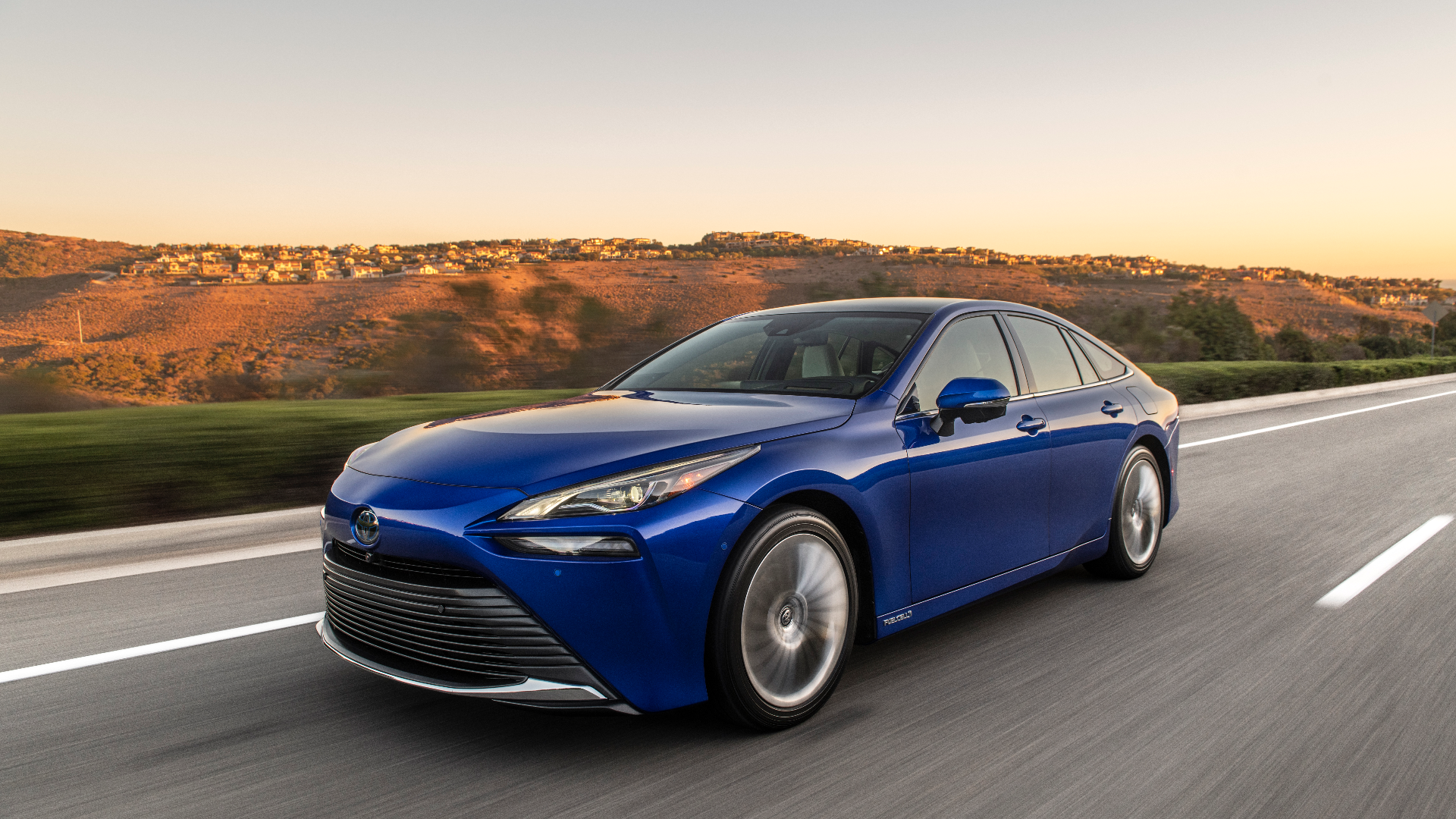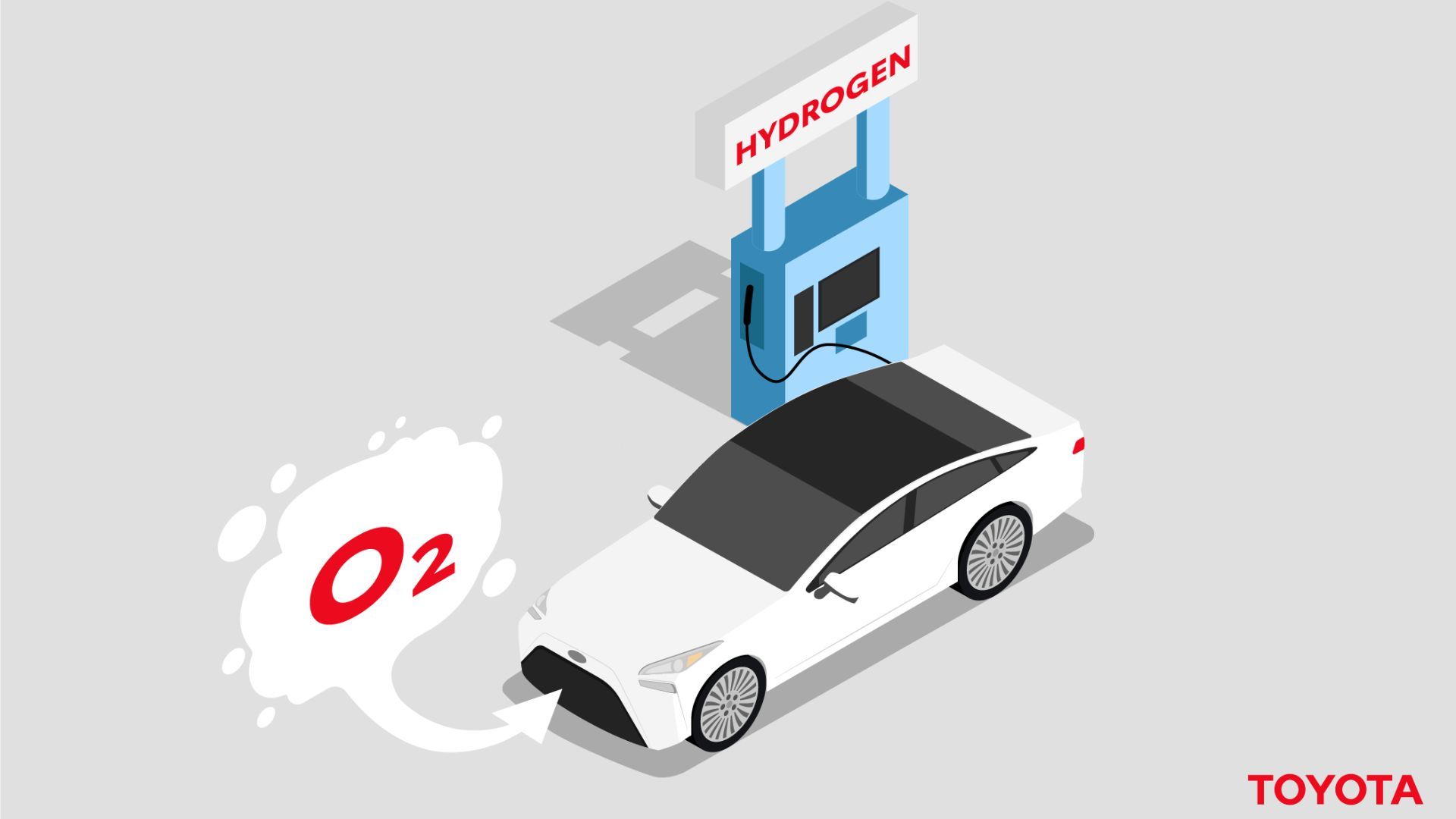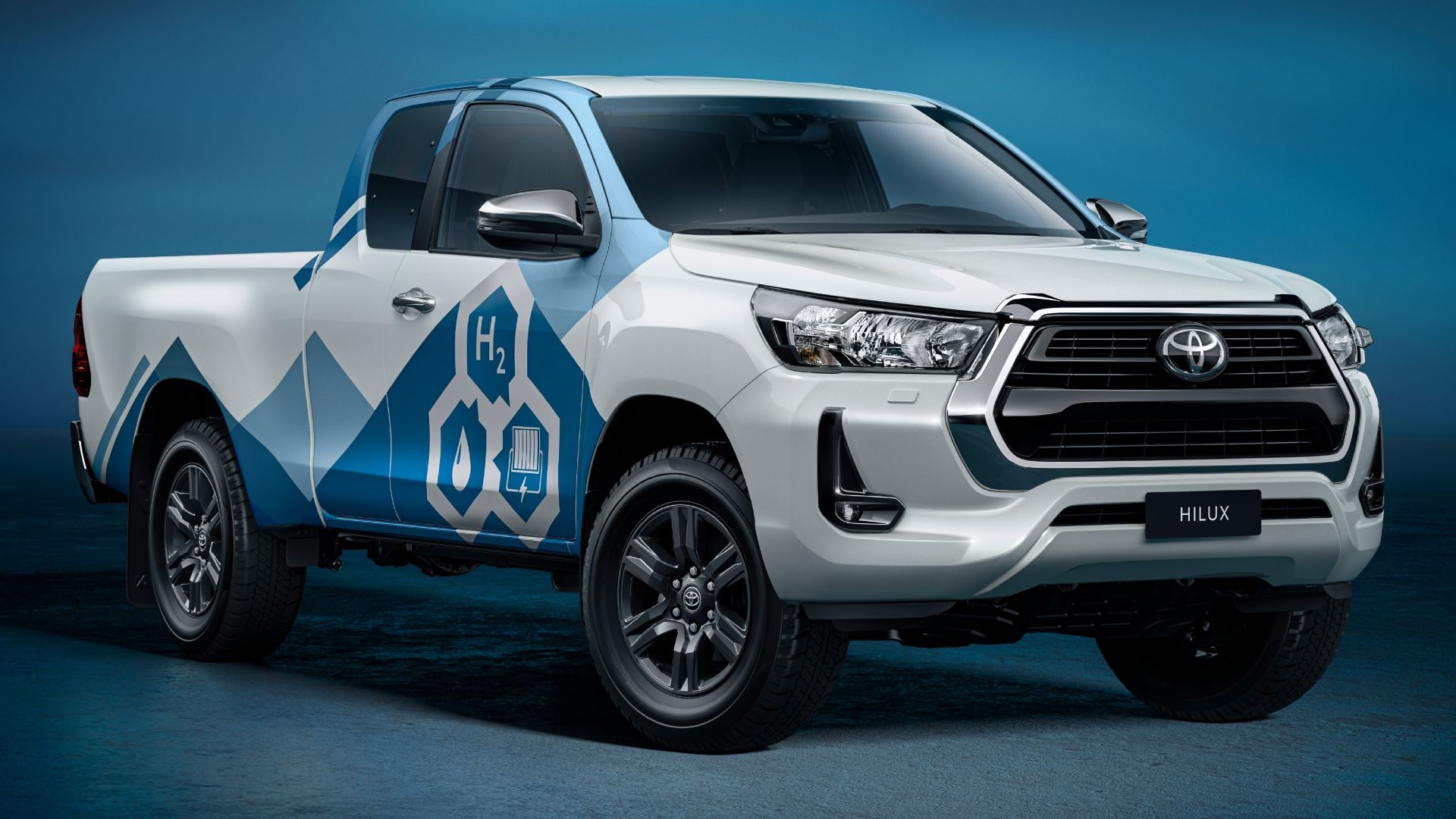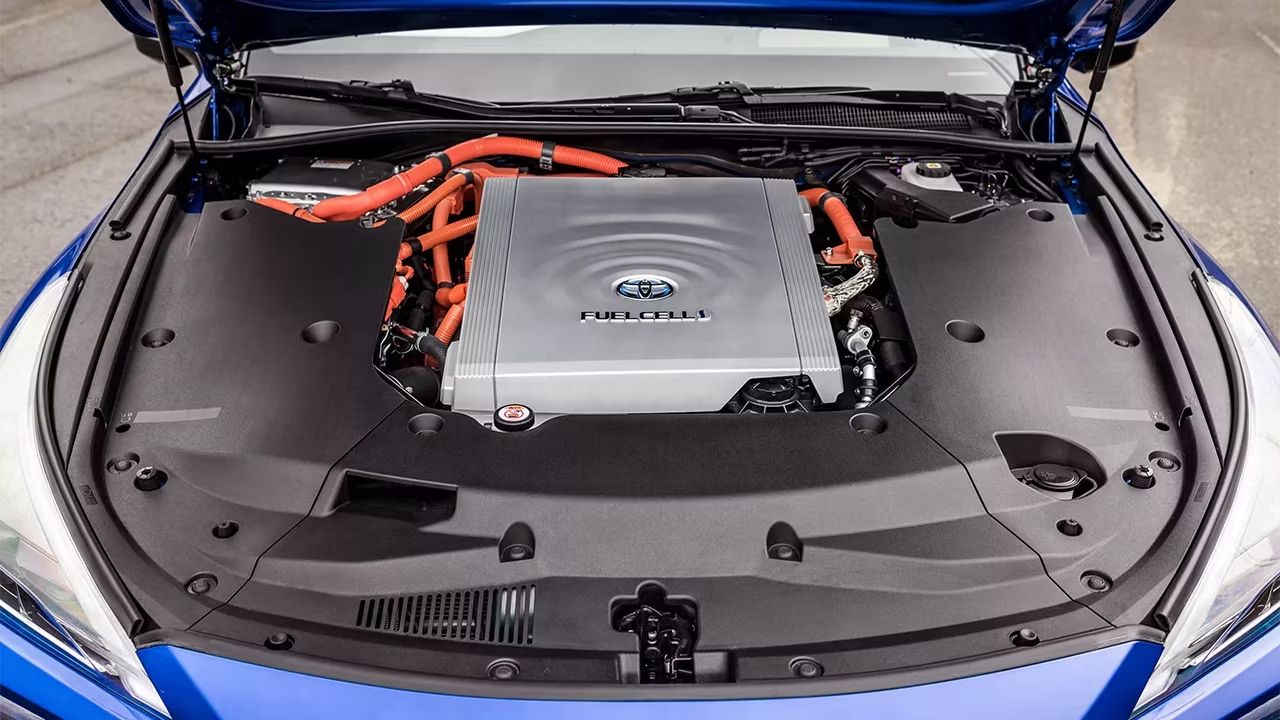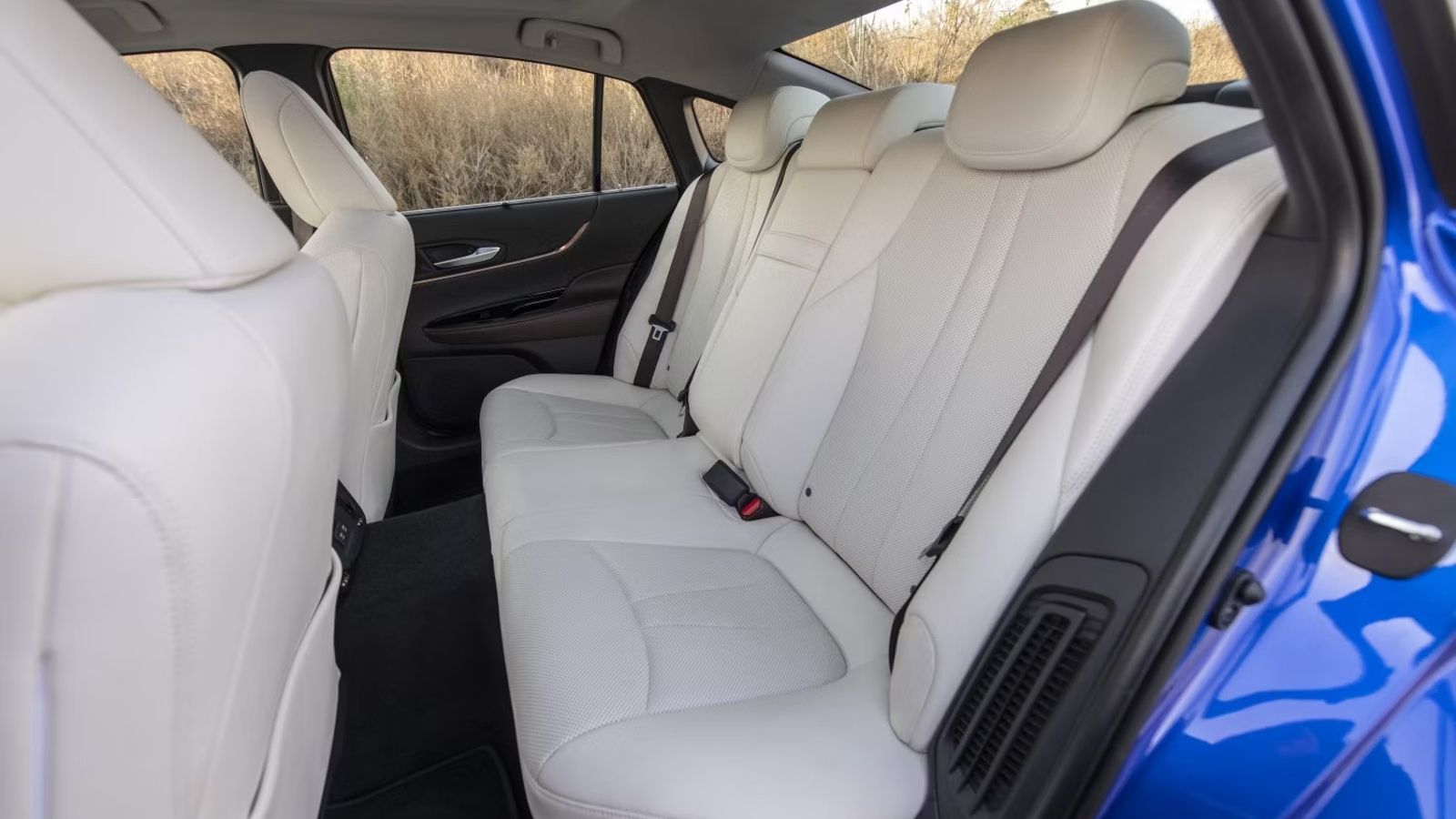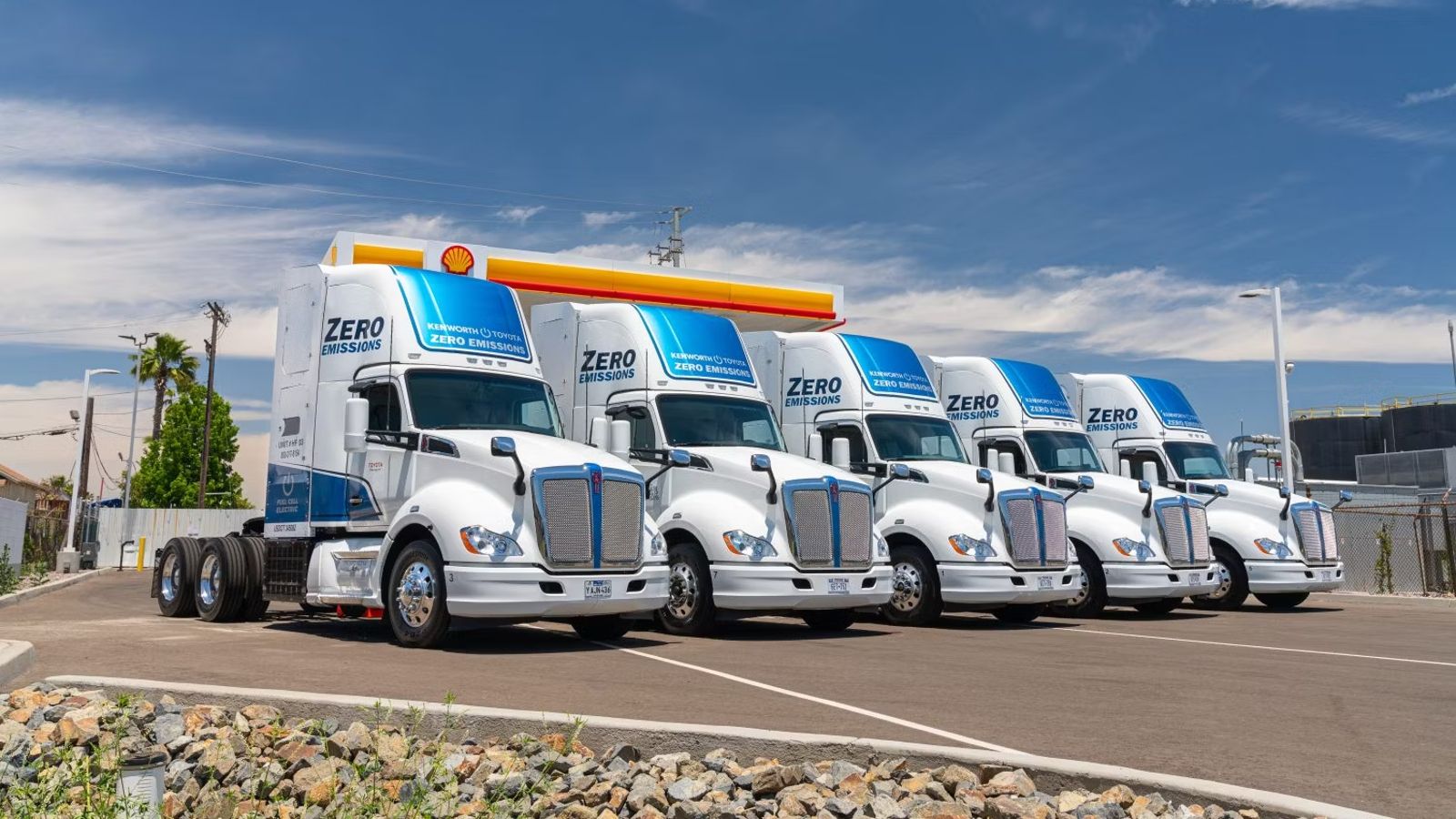When it comes to Toyota’s electrification efforts, what you’re most likely familiar with are its hybrid electric vehicles. After all, almost every Toyota on sale in the U.S. includes an option for a hybrid or is sold exclusively as such like the pioneering Prius. But they have not devoted their resources only to hybrids. As part of its multi-solution approach to tackling climate change, the company also delved into the world of hydrogen energy. There are two types of hydrogen powertrains, the hydrogen combustion engine (which is a newer development from Toyota) and the hydrogen fuel cell electric vehicle (FCEV). The former is basically an internal combustion engine that has been designed to burn liquid hydrogen instead of gasoline or diesel, while the latter uses hydrogen as a means of generating electricity. Here, we will focus on the FCEV.
Toyota’s Hydrogen FCEV research dates back to 1992
A close up of the Mirai Limited Hydro Blue 2022 on track
Research and development with Toyota’s first hydrogen car dates back to 1992. Since then, numerous prototypes and unique demonstration vehicles have been released, but it wasn’t until 2014 that Toyota was able to launch finally the world’s first mass market FCEV. called the Mirai. Now in its second generation, the 2023 Toyota Mirai continues to show the world how Toyota aims to tackle climate change with a multi-solution approach. In fact, FCEVs have numerous advantages over fully electric vehicles (EVs).
How do fuel cell electric vehicles work?
Animated image of Toyota’s hydrogen supply
Hydrogen (H), which is the most abundant element in the universe, has only one electron, so it exists mostly with two hydrogen atoms (H₂). Oxygen (O) is also a very abundant element, and once H₂ combines with O, it becomes water (H₂O) or at least in gaseous form: water vapor. It is this bonding process where H₂ bonds with O that generates the energy to create electricity that powers an FCEV’s electric motors. This bonding process takes place in what Toyota calls its polymer electrolyte membrane (PEM), which is made up of sets of thin plates separated by membranes, while the hydrogen that powers the car comes from a tank of pressurized fuel integrated into the chassis of the car.
Why is Toyota so keen to invest in FCEVs?
Three-quarter front view of a Toyota Hilux Hydrogen prototype
Aside from Toyota’s insistence on a multi-solution approach rather than putting all its eggs in one basket, FCEVs have numerous advantages over EVs. For one thing, you fill up an FCEV with hydrogen as you normally would in an internal combustion engine (ICE) vehicle. The only difference is that hydrogen stations look and work slightly different, as it is now a completely different fuel source, and hydrogen is measured by weight (such as kilograms) and not by volume (such as liters or gallons).
There is also the obvious advantage that its direct tailpipe emissions are in the form of gaseous H₂O or water vapor. In some cases, an FCEV’s emissions can condense, which is why the Toyota Mirai has a mode where it dumps all the water that has built up in the system over time. Toyota even claims that the water poured into the Mirai is potable. Finally, there’s the huge range advantage, because the EPA estimates that the current second-generation Toyota Mirai will travel 402 miles when its 32-gallon fuel tank has been filled with five kilograms of hydrogen. This means the Mirai fuel cell car can travel further than any electric vehicle out there right now. In fact, the Mirai even set a Guinness World Record in 2021 when it traveled 845 miles on a single tank of hydrogen.
Hydrogen FCEVs still have many obstacles
Toyota Mirai hydrogen fuel cell engine image
While FCEVs have their inherent advantages, there is a reason why most of the world is dedicated to all electric vehicles. Although hydrogen is abundant, storing it is not as simple as crude oil, as it must be in a pressurized reservoir due to the unstable nature of the element. Also, while hydrogen FCEVs do not emit any greenhouse gases through the tailpipe, the production of hydrogen still involves greenhouse gases. Over time, however, as Toyota continues to invest in this field, hydrogen production could soon become sustainable as well.
Producing hydrogen isn’t cheap either, and if you think hydrogen is an efficient energy source, think again. Electric vehicles are surprisingly energy efficient from the production of power to when that electricity finally turns off the car’s wheels. In fact, the energy loss from power generation to powering the vehicle is only 20 percent. For an FCEV, however, the loss of energy from the production of hydrogen fuel to finally reaching the pumps and your vehicle is a massive 62 percent. This is a very inefficient use of energy, and it doesn’t help that 95 percent of hydrogen fuel production is fueled by fossil fuels.
Rear row shot of the Toyota Mirai showing the huge central tunnel
Finally, there’s also a reason why the Toyota Mirai has such a large center tunnel that it eats up rear-seat legroom. This is because hydrogen fuel takes up a lot of space, and also the added durability that hydrogen tanks require makes them inherently bulkier compared to ICE fuel tanks. This is unlike an EV that comes with a skateboard architecture and the batteries are part of the chassis floor.
Will Toyota’s Hydrogen FCEV efforts pay off?
Trucks parked in a line with Toyota hydrogen fuel cells
That depends on how well Toyota and other manufacturers like BMW manage to continue to improve the technology in the coming years. Once the challenges of energy efficiency and hydrogen production are solved, there is a chance that FCEVs will become as popular as electric vehicles. But if there’s one area where FCEVs have much greater potential to become mainstream, it would be in commercial vehicle use. Large-body trucks will have more than enough spare space to hold bulky FCEV hydrogen tanks while still having the ability to haul cargo over long distances. The range of electric vehicles, on the other hand, is very limited when it comes to carrying out heavy work.



